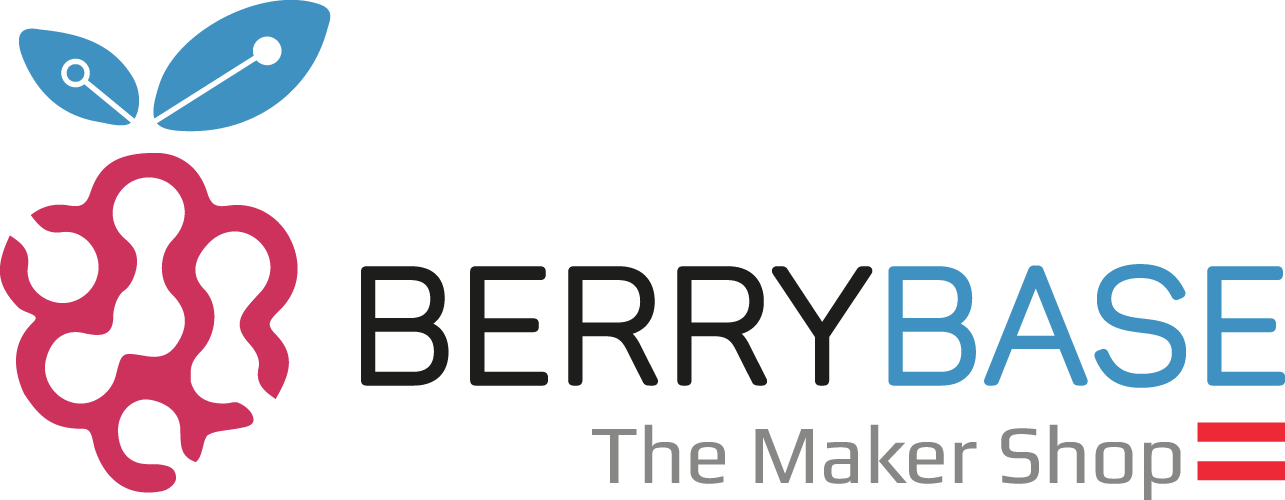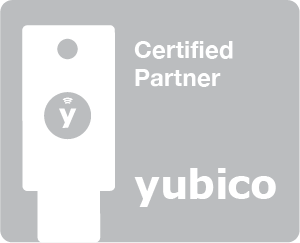No results were found for the filter!
Article no.: SON-ZBMINI
Der Sonoff SNZB-04 ZigBee ist ein Sensor, der für mehr Sicherheit in der Wohnung gegen Einbrüche sorgt. Der Sensor sendet jedes Mal eine Benachrichtigung an das Telefon, wenn eine Tür/ein Fenster geöffnet oder geschlossen wird. Kümmere dich um deine Sicherheit und genieße den Seelenfrieden in deiner Wohnung.
Article no.: SON-SNZB-04
Article no.: SON-SNZB-01
Der ZigBee-Temperatur- und Luftfeuchtigkeitssensor Sonoff SNZB-02P ist ein innovatives Gerät, das präzise Messungen, langlebigen Batteriebetrieb und fortschrittliche Smart-Home-Funktionen vereint. Dieser kompakte und ästhetisch ansprechende Sensor wurde für die Überwachung der Umweltbedingungen in Innenräumen entwickelt und ist die ideale Wahl für alle, die Wert auf Genauigkeit, Effizienz und technologische Lösungen für ihr Zuhause legen.
Article no.: SON-SNZB-02P
Article no.: SON-SNZB-03
Der Sonoff Dongle-E kann als Zigbee-Gateway in Home Assistant, openHAB, Zigbee2MQTT oder anderen Open-Source-Plattformen zur lokalen Steuerung aller Zigbee-Geräte verwendet werden. Er ermöglicht es dir, bis zu 32 Geräte gleichzeitig anzuschließen und arbeitet effizienter als CC2531 oder ConBee 2. Du brauchst nicht mehr in Zigbee-Hubs verschiedener Marken zu investieren, sondern nur noch ein universelles Gateway - den Dongle Plus!
Article no.: SON-ZDONGLE-E
Überwache die Temperatur und Luftfeuchtigkeit in verschiedenen Räumen. Der Sonoff-Sensor liefert präzise Messwerte, die er alle 5 Sekunden aktualisiert. Er ermöglicht es dir auch, die Temperatur in Echtzeit aus der Ferne zu überwachen und sendet In-App-Benachrichtigungen, wenn der eingestellte Temperaturwert überschritten wird. Außerdem speichert er die Daten in der Cloud, so dass du bequemen Zugriff auf deine Messungen hast.
Article no.: SON-SNZB-02D
Article no.: CONBEE2
Willst du deine Geräte einfacher verwalten? Mit dem Sonoff-Schalter wird das möglich sein! Mit seiner Hilfe bekommst du die Kontrolle über die Beleuchtung. Er zeichnet sich durch seine geringe Größe aus, so dass du ihn leicht in verschiedenen Einbaudosen installieren kannst, und er funktioniert auch mit verschiedenen Arten von Schaltern. Außerdem kannst du ihn mit deiner Stimme steuern, da er mit Google Home oder Amazon Alexa kompatibel ist.
Article no.: SON-ZBMINIL2
Schaffe ein intelligentes Zuhause, in dem du dich wohlfühlst. Mit der intelligenten Steckdose der Marke Sonoff kannst du angeschlossene Geräte über eine App aus der Ferne steuern sowie Arbeitspläne und Szenen erstellen. Sie ist auch mit Sprachassistenten wie Amazon Alexa kompatibel. Sie eignet sich auch gut als Signalverstärker für andere ZigBee-Geräte, die du benutzt.
Article no.: SON-S26R2ZB
Article no.: 6970504214965
Der Aqara Bewegungssensor P1 ist ein batteriebetriebener Bewegungsmelder mit einer Lebensdauer von bis zu 5 Jahren. Er bietet eine einstellbare Erkennungszeit, Bewegungsalarm und Kompatibilität mit HomeKit, Alexa und IFTTT. Die Installation ist werkzeugfrei, und der Sensor kann überall platziert werden, dank des mitgelieferten Ständers und Aufklebers. Zudem unterstützt er Aqara-Heimautomatisierung und bietet Sicherheitsfunktionen
Article no.: 6970504215979
Dank seiner hohen Leistung ist der intelligente Aqara Vibrationssensor die perfekte Lösung für die Innenüberwachung. Das Gerät ist mit intelligenter Empfindlichkeit und hochwertigem Material ausgestattet, so dass der Sensor je nach Bedarf überall platziert werden kann (z. B. wertvolle Bilder, Schubladen und Schränke, Balkontüren) und dabei volle Sicherheit gewährleistet. Der Vibrationssensor lässt sich mit anderen elektrischen Geräten kombinieren und kann jederzeit und überall per Smartphone ferngesteuert werden.
Article no.: AQA-DJT11LM
NEW
Der Sonoff SNZB-06P ist ein fortschrittlicher Sensor zur Erkennung menschlicher Anwesenheit, der dazu beiträgt, Beleuchtung und Energiemanagement in deinem Zuhause zu optimieren. Mit seinem 5,8 GHz Mikrowellenradar erfasst der intelligente Sensor nicht nur Bewegungen, sondern auch unbewegliche Personen und schaltet automatisch das Licht ein bzw. hält es an, um dir Komfort zu bieten. Seine Fähigkeit, ohne Internet zu funktionieren, die vielseitige Kompatibilität mit Plattformen sowie Energiesparfunktionen machen ihn zu einem unverzichtbaren Bestandteil eines Smart Homes.
Article no.: SON-SNZB-06P
Der Aqara Wireless Mini-Schalter T1 ermöglicht es Dir, eine Vielzahl von Smart-Home-Geräten einfach zu steuern – von der Beleuchtung bis hin zu personalisierten Szenen. Der Schalter unterstützt benutzerdefinierte Aktionen, sodass Sie mit einem einfachen Klick, Doppelklick oder langen Drücken unterschiedliche Befehle ausführen können. Nach der Verbindung mit einem Aqara Hub bietet der kabellose Mini-Schalter T1 Kompatibilität mit verschiedenen Plattformen, darunter HomeKit, Alexa, Google Home, IFTTT und Matter.
Article no.: AQA-MiniT1
Article no.: RASPBEE2
Der Sonoff SNZB-01P ist ein revolutionärer ZigBee Smart Switch, der jedes Zuhause in einen intelligenten Raum verwandelt. Sein kompaktes, rundes Design und seine Benutzerfreundlichkeit machen ihn zur perfekten Wahl für alle, die ihr Haussteuerungssystem unkompliziert aufrüsten möchten. Von benutzerdefinierten Tastenaktionen über eine lange Batterielebensdauer bis hin zur Kompatibilität mit dem neuesten Zigbee 3.0-Protokoll bietet der SNZB-01P viele Funktionen, die das Leben vereinfachen.
Article no.: SON-SNZB-01P
Der CC2531 Dongle ist ein äußerst nützliches und funktionelles USB-Gerät, das als ZigBee-Koordinator fungiert. Er dient als eine Art Startpunkt, an den du andere IEEE802-konforme Geräte anschließen kannst. Schließe ihn einfach mit deinem Home Assistant an deinen Computer oder Laptop an und genieße eine benutzerfreundliche Oberfläche. Auf dem Gateway ist auch die CC2531ZNP-Prod Software geladen, mit der du die ZigBee2MQTT Anwendung nutzen kannst.
Article no.: SON-CC2531
Article no.: 6970504210646
Article no.: BLITZW-SHP15
Das Conbee III ist das ultimative Zigbee Gateway, das nahtlos Hersteller übergreifend Zigbee-Geräte integriert, ohne auf die Cloud angewiesen zu sein. Mit einer beeindruckenden Reichweite von bis zu 30 Metern in Gebäuden und 200 Metern im Freifeld bietet es eine zuverlässige und stabile Verbindung für Ihr Smart Home. Die innovative OpenThread Border Router Firmware, demnächst als Tech-Preview verfügbar, erweitert die Anwendungsmöglichkeiten zusätzlich.
Article no.: CONBEE3
Article no.: AQA-DoorP2
Article no.: Aqa-UT2-D02
Der Aqara Sensor ist ein fortschrittliches Gerät zur Überwachung der Raumtemperatur, Luftfeuchtigkeit und des Luftdrucks. Er bietet Echtzeitdaten und historische Aufzeichnungen, die direkt in der App angezeigt werden. Bei ungewöhnlichen Umgebungsbedingungen sendet der Sensor Alarmbenachrichtigungen an Ihr Telefon. Kompatibel mit HomeKit, Google Home, Amazon Alexa und Matter, integriert er sich nahtlos in Ihr Smart-Home-System.
Article no.: AQA-TempT1
Das Modul Aqara Single Switch ist ein Zigbee 3.0 Relais, das hauptsächlich verwendet wird, um Lampen oder Geräte ein- und auszuschalten. Es verfügt über eine Stromverbrauchsüberwachung in Echtzeit.
Das Relaismodul Aqara (ohne Neutralleiter) erlaubt es, die Stromversorgung einer Last, beispielsweise eine Lampe oder ein Gerät - ein- oder auszuschalten. Es funktioniert mit einem kompatiblen Smart Home Hub und realisiert so Funktionen wie die Steuerung aus der Entfernung über eine App und die Timer-Kontrolle.
Das Relaismodul Aqara (ohne Neutralleiter) erlaubt es, die Stromversorgung einer Last, beispielsweise eine Lampe oder ein Gerät - ein- oder auszuschalten. Es funktioniert mit einem kompatiblen Smart Home Hub und realisiert so Funktionen wie die Steuerung aus der Entfernung über eine App und die Timer-Kontrolle.
Article no.: 6970504213302
Schaffe ein smartes Zuhause, in dem du gut lebst. Mit der Sonoff ZigBee Bridge Pro kannst du bis zu 128 Geräte verbinden und unterstützt 2 Protokolle - Wi-Fi und ZigBee 3.0. Mit ihr kannst du intelligente Szenen erstellen, angeschlossene Geräte über die eWeLink-App verwalten und verfügbare Modi nutzen, um dein Zuhause sicherer zu machen. Das Produkt ist auch mit Amazon Alexa, Google Assistant und Samsung SmartThings kompatibel.
Article no.: SON-ZBRG-PRO
Article no.: NOUS-E3
Der Aqara Water Leak Sensor ist ein Gerät, mit dem du jedes Wasserleck aufspüren kannst. Im Falle eines Lecks oder einer Überschwemmung zeigt die Anwendung eine Warnung an. Das Gerät kann über den Aqara Hub mit anderen Geräten kommunizieren. Wird ein Leck entdeckt, sendet Aqara Hub eine Warnung an dein Smartphone. Wenn der Sensor mit einem Magnetventil verbunden ist, kann das Wasser bei einem Leck automatisch abgestellt werden. Das Produkt kann überall platziert oder befestigt werden, ohne dass eine Verkabelung erforderlich ist.
Article no.: AQA-Water1
Der NOUS E5 ist ein innovativer ZigBee-Temperatur- und Luftfeuchtigkeitssensor, der eine genaue Überwachung der Raumklimabedingungen ermöglicht. Kompatibel mit iOS und Android, bietet er Echtzeit-Datenanalyse durch die NOUS SMART HOME App. Mit seiner einfachen Installation und benutzerfreundlichen App-Integration ist er ein essentielles Tool für ein intelligentes und vernetztes Zuhause.
Article no.: NOUS-E5
Der NOUS E6 ist ein hochmoderner ZigBee-Temperatur- und Luftfeuchtigkeitssensor, der präzise Klimaüberwachung in Ihrem Zuhause ermöglicht. Kompatibel mit iOS und Android, erlaubt er die Steuerung über die NOUS Smart Home App und bietet detaillierte Messdaten mit Speicherung für ein Jahr. Perfekt für die intelligente Hausautomatisierung.
Article no.: NOUS-E6
Im digitalen Zeitalter wird die Steuerung der Heizung zu Hause nicht nur bequemer, sondern auch effizienter. Der intelligente Sonoff TRVZB Zigbee 3.0 Thermostatkopf bietet den Nutzern eine unvergleichliche Kontrolle über die Temperatur in ihrem Zuhause. Mit der Möglichkeit der Fernsteuerung, der Einzelraumregelung, der Zeitplanung, der Fenstererkennung und der Kindersicherungsfunktion setzt dieses Produkt neue Maßstäbe in der Hausautomation.
Article no.: SON-TRVZB
Mach deine Wohnung angenehm warm. Mit dem Avatto TRV06 smarten Thermostat ventil kannst du es mit der Tuya App von fast überall auf der Welt aus fernsteuern und Betriebspläne erstellen. Mit dem Hub (nicht im Lieferumfang enthalten) kannst du alle Funktionen nutzen, die das Thermostat ventil bietet. Er funktioniert auch mit intelligenten Sprachassistenten. Er verfügt über eine Reihe praktischer Funktionen, darunter die Erkennung offener Fenster, Entkalkung und Frostschutz. Außerdem verfügt es über ein LED-Display, auf dem du die wichtigsten Informationen leicht ablesen kannst.
Article no.: AVA-TRV06
Bring das Smart Home Management auf ein neues Level. Mit der intelligenten Steckdose BW-SHP13 von Blitzwolf kannst du deine angeschlossenen Geräte mit einer App oder per Sprachbefehl aus der Ferne steuern. Erstelle Arbeitspläne und kopple deine Geräte mit zusätzlichen Sensoren (nicht im Lieferumfang enthalten), um dein Leben noch einfacher zu machen. Mit dem Produkt kannst du auch deinen Stromverbrauch überwachen.
Article no.: BLITZW-SHP13
Die Sonoff iHost Smart Home Hub AIBridge ist ein innovativer lokaler Server, der dein Zuhause in einen intelligenten Raum verwandelt. Mit Kompatibilität für Wi-Fi- und ZigBee-Protokolle, lokaler Datenspeicherung, einer offenen API-Schnittstelle und der Möglichkeit, bis zu 128 Geräte zu verwalten, ist er die perfekte Lösung für ein modernes Zuhause.Dieses fortschrittliche Produkt bietet Datenschutz und Datensicherheit und ermöglicht eine zuverlässige Steuerung und individuelle Anpassung der Hausautomation.
Article no.: SON-AIBRG
Article no.: 6970504217416
Das Modul Aqara Single Switch ist ein Zigbee 3.0 Relais, das hauptsächlich verwendet wird, um Lampen oder Geräte ein- und auszuschalten. Es verfügt über eine Stromverbrauchsüberwachung in Echtzeit.
Das Relaismodul Aqara (mit Neutralleiter) erlaubt es, die Stromversorgung einer Last, beispielsweise eine Lampe oder ein Gerät - ein- oder auszuschalten. Es funktioniert mit einem kompatiblen Smart Home Hub und realisiert so Funktionen wie die Steuerung aus der Entfernung über eine App und die Timer-Kontrolle.
Das Relaismodul Aqara (mit Neutralleiter) erlaubt es, die Stromversorgung einer Last, beispielsweise eine Lampe oder ein Gerät - ein- oder auszuschalten. Es funktioniert mit einem kompatiblen Smart Home Hub und realisiert so Funktionen wie die Steuerung aus der Entfernung über eine App und die Timer-Kontrolle.
Article no.: 6970504213296
Viewed





















































